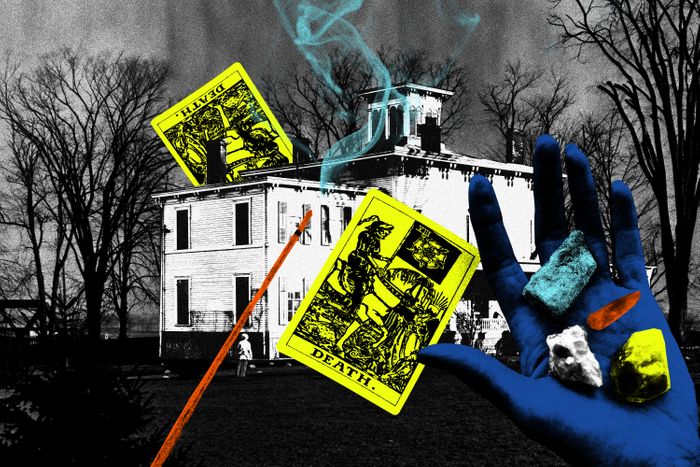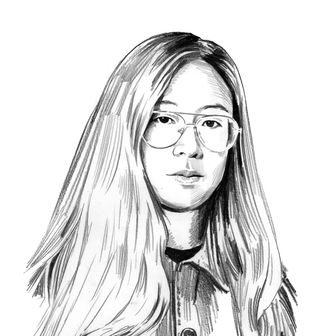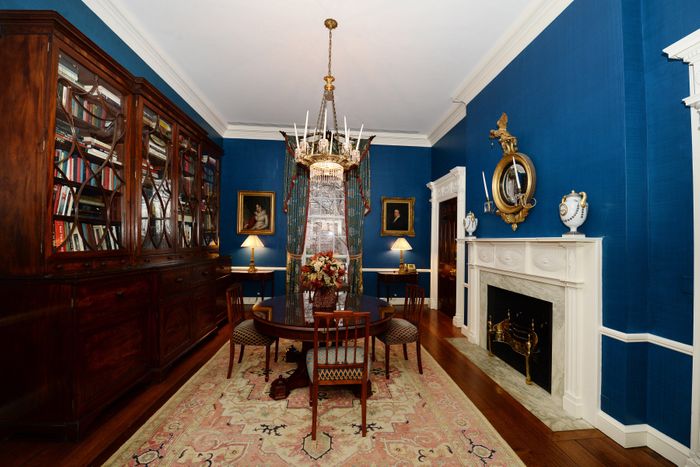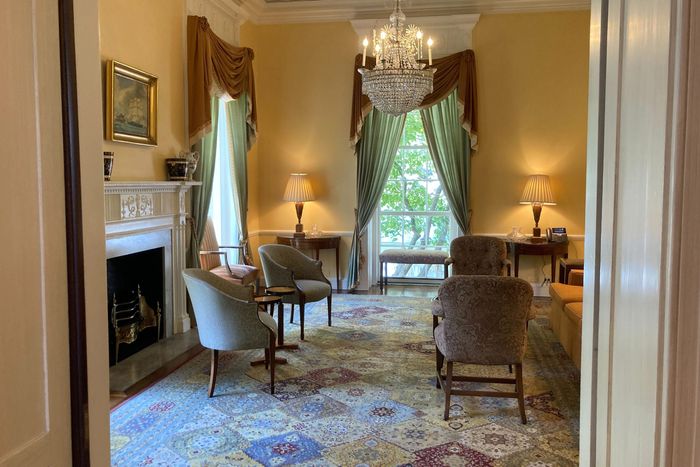
The rooms in Gracie Mansion named for the color of their walls are generally pretty cheery: The Yellow Parlor is painted a bright mustard; the Peach Room is a sunny Creamsicle. But the deep-cobalt walls of the Blue Room, which is sometimes used to entertain the mayor’s guests, are cast in dim lamplight and bare except for a mirror and two oil portraits hanging side by side. The first is of William Gracie, the son of Archibald Gracie, who built the mansion on a grassy spot overlooking the East River in 1799 as a summer residence for his wife and six children. The second is of Elizabeth Wolcott, William’s wife, who died there of a reported case of “apoplexy” when she was just 24 years old. “Some say she haunts the house,” Mary Reynolds, our white-haired tour guide who delivers her formidable knowledge with a touch of dry humor, says as a smile crosses her face.
My tour mate Cathy Towle can confirm as much, though she says Wolcott disagrees about the cause of her death: “Elizabeth thinks she was poisoned.” Wolcott is also apparently upset that she died before she could throw any parties in the house, which is very relatable. It is a crisp and perfect day in late September, and Towle, a practicing medium for the last 20 years, has agreed to join me at the historic mayoral residence for the tour offered to the public every week by the Gracie Mansion Conservatory. And though we haven’t mentioned it to our guide, or to the dozen or so other people walking with us through these stately old rooms, we are here to get to the bottom of Eric Adams’s claims about the house’s paranormal residents. (“Listen, they’re creeping around,” the mayor has said of the ghosts.)
After its last private owners failed to pay their taxes, the city took ownership of the Federal-style mansion in 1896 and converted it into a concession stand and public restroom. It wasn’t until 1942 that it became the official home to New York City’s mayors. (Fiorello La Guardia was the first to begrudgingly move in, after an apparent campaign from Robert Moses and because the mansion was considered more secure during World War II.) Towle tells me she knows nothing of this history and hasn’t looked anything up, since she aims to keep her readings as pure as possible. I believe her because trust is the foundation of both human and supernatural connection.
In each room, Towle tries to get a sense of who or what we might be dealing with, which is apparently not limited to the people who have died there. (I’ve confirmed two, so far.) “If someone spent a lot of time in a place, their energy is there,” she explains. “I felt La Guardia’s presence there, but did not experience his spirit residing there.” (After the tour, Towle fills me in on much of what she discovers, on a nearby bench.) The house, as far as I can tell, is basically vibrating with spirit. She tells me about children running around, a man who put his hand on her shoulder. Many of them seem to have overwhelming furniture and paint-color opinions that they relay to her: “They don’t like the new décor; they think it’s fake.”
Much of the blame for this, we learn from our guide, rests with Susan Wagner, the wife of the late mayor Robert Wagner, who oversaw the addition of the mansion’s newest wing in 1966. (Though they may also hate the interior tastes of Michael Bloomberg, who “replenished” the mansion in the months after September 11.) Towle and I are discreet to maintain the secret of why we’re there, and our ghost hunt largely goes unnoticed by the other guests on the tour, except for one man who tells us, “You sure were taking a lot of notes!” Towle is quiet as we pass through the updated wing’s main space, a periwinkle-blue ballroom that has recently been haunted by the likes of Anna Wintour, but can’t help but whisper, as we pass into the brilliantly sunny Peach Room, “This room has a lot of activity.”
That activity is surprisingly British. Before Gracie Mansion was built, the land was home to a different house owned by royalist Jacob Walton, and the spot became strategically important during the Revolutionary War. Towle says she felt a lot of energy from the Redcoats who may have been injured or died in the area. When I ask her what the British might think of our current mayor, Towle says they “didn’t say anything about him.” (Ouch.)
As I stare off into space and ponder the abundance of loyalist spirits and the general gall of the British Empire, a woman on the tour interrupts my reverie to ask if we will be learning about “any secret passages” in the house, a matter she “assumes will be covered later.” Reynolds explains that secret tunnels are not part of the tour, but the question makes me realize that we’re all kind of here to learn what might be hidden in the mansion’s old bones.
Like us, ghosts are gossips, Towle says. Servants in particular are “tattle tales … they just want to talk, for some reason,” she explains. It makes a certain sense, then, that our city’s extroverted party mayor is the one who claims to most sense their presence.
When the tour ends, we all clap for Reynolds, who has led our tour with flair and grace. Next, Towle and I, along with most every other woman on the tour, file downstairs to use the bathroom. While we wait, the lights go completely dark, leaving us in quiet blackness for a few long seconds. Towle’s voice breaks the silence: “Must be the ghosts!” she says cheerily. The other ladies laugh, but I say nothing. The lights, finally, flicker back on.







